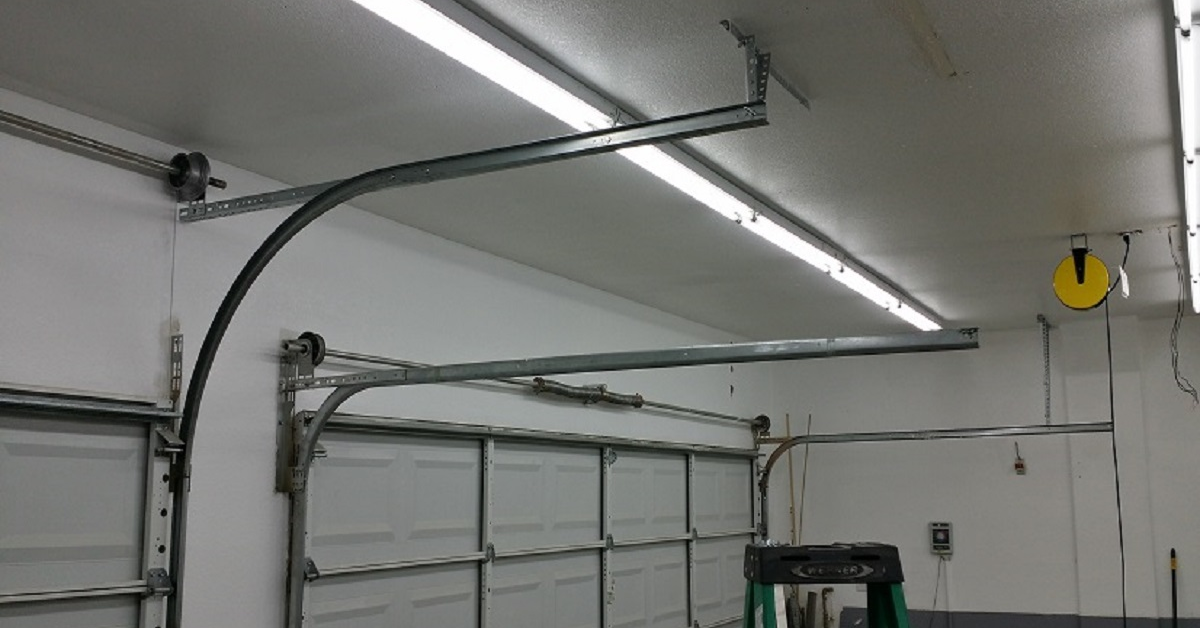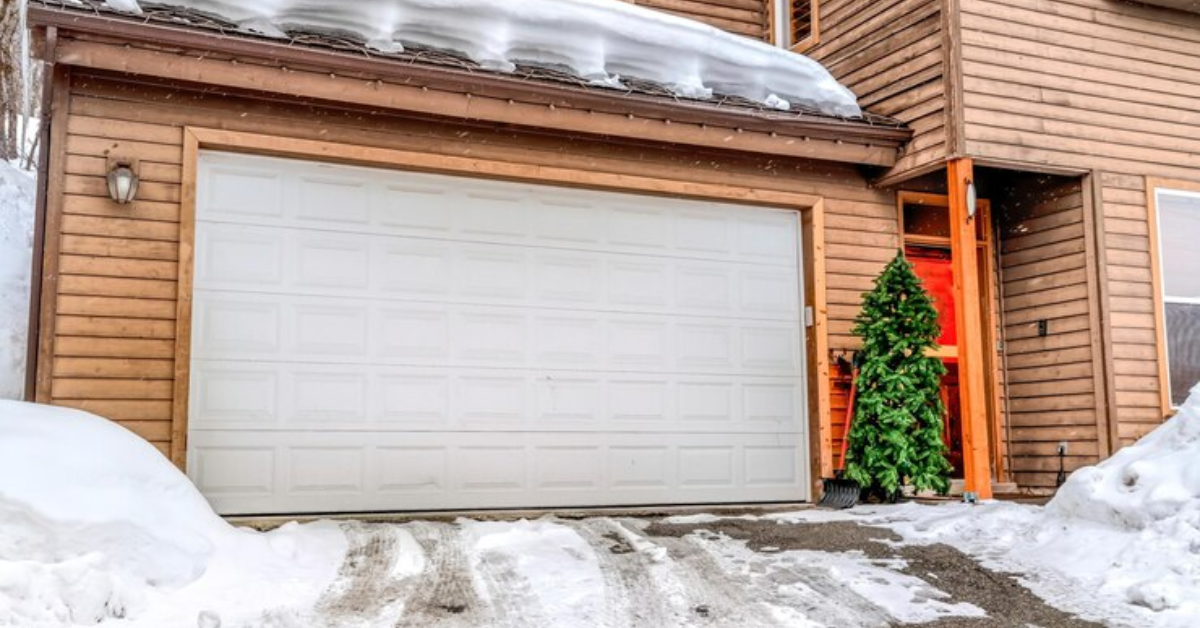Understanding Garage Door Tracks and Their Maintenance
Garage door tracks stand as the often-overlooked backbone of a smoothly functioning garage door system. These vital components play a pivotal role in guiding the door's movement, ensuring its smooth and precise operation. Understanding the significance of tracks within the context of garage doors unveils the intricate mechanics behind their functionality and maintenance.
The tracks serve as the guiding rails, enabling the door to move along a specified path. They bear the weight of the door and facilitate its smooth opening and closing motions. The precise alignment and condition of these tracks are crucial for the door's stability, preventing misalignments or disruptions that could hinder its operation or pose safety risks.
Overview of Different Track Types
Garage door tracks come in various types, each designed to accommodate different door mechanisms and configurations. From standard vertical track systems to more complex curved or low-headroom tracks, the diversity caters to the distinct needs of various garage setups. Understanding the nuances of these track variations sheds light on their specific functionalities and maintenance requirements.
Embarking on an exploration of garage door tracks not only unveils their pivotal role in the door's movement but also underscores the significance of
proper maintenance to ensure their efficiency and longevity. Delving into the intricacies of these tracks provides a foundation for comprehending their maintenance needs and optimizing their performance, thereby safeguarding the overall functionality of the garage door system.
Components of Garage Door Tracks
Garage door tracks typically comprise vertical and horizontal sections. Vertical tracks run alongside the door opening, guiding the door's vertical movement. Horizontal tracks, usually found near the ceiling, guide the door's horizontal movement as it transitions from a vertical position to parallel with the ceiling when fully open.
Rollers, often made of steel or nylon, are attached to the sides of the door and glide within the tracks, facilitating smooth movement. Hinges connect individual door panels, allowing them to bend and follow the track's curvature during operation. Brackets secure the tracks to the wall and ceiling, ensuring stability and
proper alignment. Mounting hardware includes bolts, screws, and fasteners that hold the tracks in place.
Understanding Track Alignment and Functionality
Correct alignment of the tracks is critical for the door's smooth operation. Misaligned tracks can cause the door to bind, jam, or operate unevenly, leading to potential damage or safety hazards. Vertical tracks need to be precisely parallel and plumb to ensure the door moves smoothly without binding. Any deviation from proper alignment can cause the door to veer off track during operation.
Horizontal tracks should maintain a consistent elevation and alignment along their length. Properly aligned horizontal tracks ensure the door moves smoothly along its path without jerking or uneven motion. The tracks work in tandem with rollers, hinges, and the door itself to guide its movement. As the door opens or closes, the rollers glide within the tracks, allowing the door to move along its intended path smoothly and efficiently.
Understanding the structure and alignment of garage door tracks is essential for maintaining the door's functionality and ensuring smooth, hassle-free operation. Proper alignment and regular maintenance of these components are crucial for preserving the door's integrity and preventing potential issues that may arise from misaligned or poorly maintained tracks.
Common Issues with Garage Door Tracks
Misalignment Problems:
Misaligned tracks often manifest as visible gaps between the tracks and the door or irregular movements during operation. The door might jerk or bind,
creating noise or resistance while opening or closing. Factors such as loose mounting brackets, impact damage, or gradual shifts in the structure can lead to track misalignment. Over time, vibrations or heavy usage might cause the tracks to gradually shift out of alignment. Misaligned tracks can impede the door's movement, potentially causing damage to the tracks, rollers, or hinges. Continued operation with misaligned tracks can exacerbate the issue, leading to further damage to the door itself.
Track Obstructions and Damage:
Debris accumulation, such as dirt, leaves, or small objects, can obstruct the tracks, hindering the door's movement. Even minor obstructions can cause the door to jam or operate unevenly. Tracks can suffer damage from impacts, corrosion, or wear over time.
Dents, bends, or rust can impede the smooth movement of the door along the tracks, leading to operational issues. Obstructions and damage can cause the door to become stuck, creating safety hazards or damaging the door components. Continual use without addressing these issues may exacerbate damage and compromise the door's functionality.
Addressing These Issues:
Regular Inspection: Routinely inspect the tracks for any signs of misalignment, obstructions, or damage. Clean the tracks regularly to prevent debris buildup.
Track Realignment: If tracks are misaligned, carefully adjust the brackets and fasteners to restore proper alignment. Seek professional assistance if adjustments are challenging.
Clearing Obstructions:
Remove any debris or objects obstructing the tracks carefully. Ensure the tracks are clean and free of obstacles to allow smooth door operation.
Addressing misalignment problems and promptly clearing obstructions or repairing damaged tracks is crucial for ensuring the garage door's smooth and safe operation. Regular maintenance and immediate attention to these issues can prevent further damage and maintain the door's functionality.
Maintenance Practices for Garage Door Tracks
Regular Inspection Routine
- Conduct regular visual inspections of the tracks for signs of misalignment, damage, or obstructions. Look for gaps, dents, rust, or debris accumulation that might hinder smooth door movement.
- Test the door's operation regularly to ensure smooth opening and closing without jerking or resistance. Listen for any unusual noises that might indicate track issues.
- Check and tighten any loose mounting brackets, bolts, or screws holding the tracks in place. Loose hardware can contribute to track misalignment.
Cleaning and Lubrication Guidelines
- Clean the tracks regularly to remove dirt, debris, or obstructions that can hinder the door's movement. Use a soft brush or cloth to wipe away accumulated debris.
- Apply a silicone-based or lithium-based lubricant to the tracks, rollers, and hinges to ensure smooth movement. Avoid using grease or oil-based lubricants as they can attract more dirt.
- After lubrication, wipe off any excess lubricant to prevent buildup and ensure the tracks remain clean.
Track Alignment and Adjustment Techniques
- Use a level to check the tracks' alignment, ensuring they are plumb and parallel. If misaligned, carefully loosen the mounting brackets and gently tap them into the correct position before tightening them back securely.
- Adjust the tracks' positioning by loosening the mounting bolts slightly and adjusting the track's position. Use a level to ensure proper alignment before retightening the bolts.
- If adjusting tracks seems challenging or if there are significant alignment issues, consider seeking professional assistance to ensure proper alignment without causing further damage.
Regular inspection, cleaning, and lubrication of garage door tracks are essential maintenance practices for ensuring the door's smooth and efficient operation. When performing adjustments, proceed cautiously, and seek professional help if uncertain about proper alignment or adjustment techniques. These practices help maintain the tracks' integrity and contribute to the longevity of the garage door system.
Professional Maintenance and Repairs
If you're facing intricate track issues like severe misalignment, structural damage impacting the door's operation, or if safety hazards arise due to extensive damage or handling heavy components, seeking professional assistance is crucial. Additionally, if you lack experience or confidence in performing track maintenance, especially intricate tasks like alignment or structural adjustments, consulting a professional ensures proper handling and prevents exacerbating the problem.
Professional track maintenance is indispensable for the optimal functioning and longevity of a garage door system. Professionals bring a wealth of expertise, experience, and specialized tools, enabling accurate diagnosis and effective repairs or adjustments for track issues. Their adeptness in handling potentially hazardous situations ensures safety while addressing complex track problems and heavy components. Scheduled professional maintenance not only detects and resolves issues early but also prevents minor problems from snowballing into costly repairs. Ultimately, this meticulous care contributes significantly to the system's longevity, ensuring efficient functionality and minimizing the risk of unexpected breakdowns.
Seeking professional assistance for track maintenance and repairs ensures thorough and precise solutions for complex or challenging issues. Their expertise not only resolves immediate problems but also contributes to the long-term efficiency and safety of the garage door system, offering peace of mind regarding its operation and reliability.
Preventive Measures for Track Care
To prevent common track issues, adhere to a proactive maintenance routine. Regularly clean the tracks to remove debris and buildup that could obstruct smooth door movement. Perform visual inspections periodically, addressing signs of wear, misalignment, or damage promptly to prevent escalation. Ensure proper track alignment and stability by checking and tightening loose mounting brackets, bolts, or screws. Lastly, avoid forceful impacts or collisions with the garage door to prevent track misalignment or damage, preserving the door's functionality.
To shield tracks from environmental damage, implement protective measures. Ensure thorough weather sealing in the garage to avert moisture buildup or exposure to extreme conditions that might cause rust or corrosion. Trim surrounding vegetation near the garage door to prevent debris accumulation in the tracks, keeping them clear. Maintain an uncluttered area around the tracks to prevent object obstruction, safeguarding the door's movement. Additionally, apply rust inhibitors or protective coatings to the tracks, particularly in regions susceptible to humidity or harsh weather, ensuring prolonged track durability.
By implementing these preventive measures, homeowners can mitigate common track issues and protect garage door tracks from environmental damage, ensuring smoother door operation and prolonging the tracks' longevity. Regular maintenance and proactive care contribute significantly to the overall functionality and durability of the garage door system.
Conclusion:
The diligent care of garage door tracks stands as a fundamental aspect of ensuring the longevity and smooth functionality of the entire garage door system. Regular maintenance, including cleaning, lubrication, and alignment checks, plays a pivotal role in preventing issues and preserving the tracks' integrity. Remember, prompt attention to minor issues prevents larger problems down the line. By following these maintenance practices and seeking professional assistance when needed, homeowners can optimize the efficiency of their garage door tracks, ensuring years of reliable operation for their garage door system.




